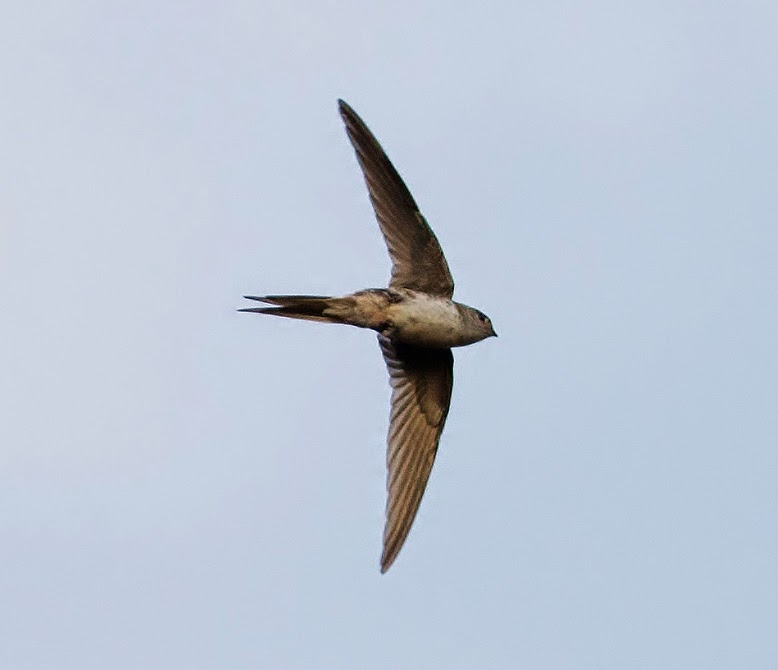Tachornis squamata
 |
| Photo by Dave Curtis (Flickr) |
Common name:
fork-tailed palm-swift (en); andorinhão-do-buriti (pt); martinet claudia (fr); vencejillo tijereta (es); gabelschwanzsegler (de)
Taxonomy:
Order Apodiformes
Family Apodidae
Range:
This species is found in northern South America, east of the Andes. they are present from Colombia, Venezuela and the Guyanas south to Bolivia and southern Brazil as far as Mato Grosso do Sul and São Paulo.
Size:
These birds are 11,5-14 cm long and weigh 11 g.
Habitat:
The fork-tailed palm-swift is mostly found in dry tropical forests, but also uses moist tropical forests, wet grasslands, marshes, second growths and urban areas. They are present at altitudes of 200-900 m.
Diet:
They forage on the wing, taking various flying insects.
Breeding:
These birds nest on a small cup made of feathers, saliva and plant material, placed on the inside of a dead leaf of a moriche palm Mauritia flexuosa. The female lays 2-4 white eggs which she incubates for 19-21 days. There is no available information regarding the fledgling period.
Conservation:
IUCN status - LC (Least Concern)
This species has a very large breeding range and is is described as common. The population is suspected to be stable in the absence of evidence for any declines or substantial threats.
No comments:
Post a Comment